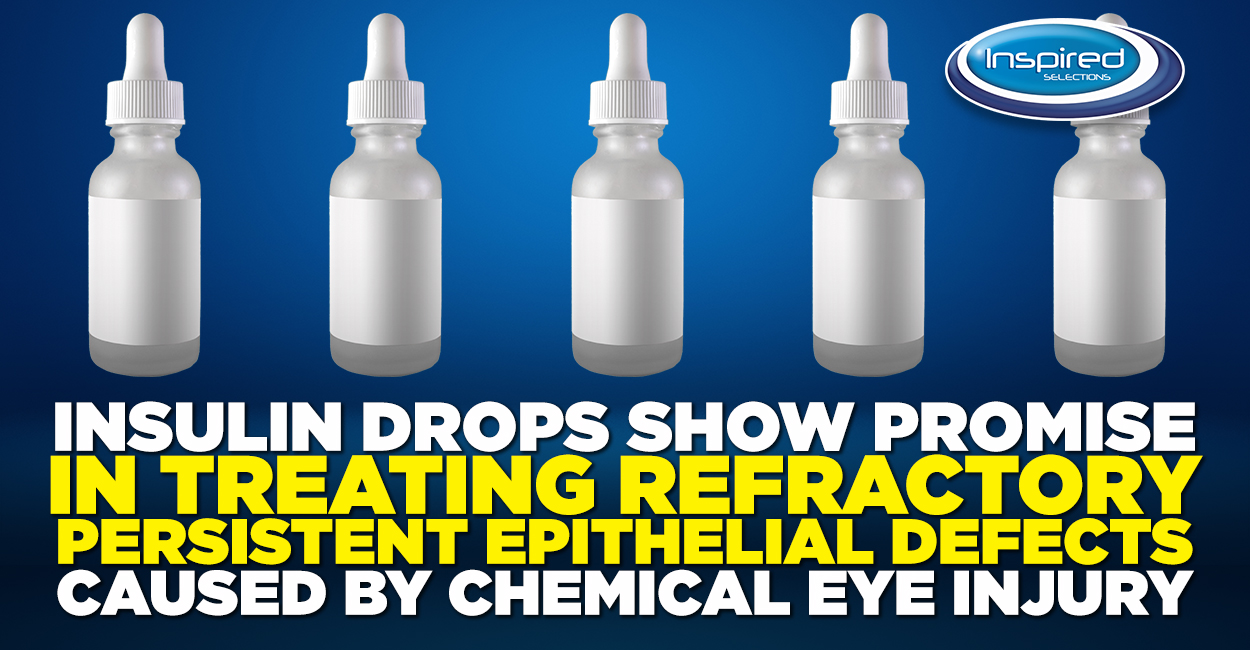
A groundbreaking study conducted by Moorfields Eye Hospital in London has unveiled a promising new treatment for refractory persistent epithelial defects resulting from chemical eye injuries. Published in the National Library of Medicine, the research explores the potential of using insulin eye drops to accelerate the healing process and restore ocular health in patients facing this challenging condition.
Chemical eye injuries are serious and can lead to persistent epithelial defects, where the protective outer layer of the eye fails to heal properly. Conventional treatments have shown limited success in managing such cases, prompting researchers to investigate alternative therapies. This study introduces the use of insulin drops and demonstrates encouraging results, but further investigations are needed to fully establish its effectiveness and safety.
Between March 2020 and September 2021, the research team conducted a trial involving eleven eyes of ten patients with refractory persistent epithelial defects caused by chemical eye injury. Insulin eye drops were administered four times daily to each participant. Throughout the study period, the patients received regular assessments, including full slit-lamp examinations and serial anterior segment photography every two weeks.
The outcomes of this innovative study were remarkable. An impressive 82% of the eyes (nine out of eleven) responded positively to the insulin drops, experiencing complete healing of their persistent epithelial defects. The mean time for healing was recorded at 62.3 ± 34.6 days, showcasing the relatively rapid and effective action of the treatment.
The success of insulin drops in promoting wound closure for chemical eye injuries indicates its potential as a valuable therapeutic option for patients suffering from these conditions. The method’s relatively quick healing time may contribute to improved patient outcomes and a higher quality of life for those who previously faced prolonged and debilitating symptoms.
While the study’s findings are promising, it is essential to recognize the limitations of this research. The sample size was relatively small, with only ten patients participating in the trial. As such, larger, controlled studies are warranted to validate the efficacy and safety of insulin drops for treating persistent epithelial defects caused by chemical eye injuries. Conducting more comprehensive investigations will allow researchers to draw more definitive conclusions and provide a solid foundation for integrating this novel therapy into standard medical practice.
Furthermore, understanding the mechanisms by which insulin contributes to accelerated wound healing and cellular regeneration in the eye is crucial for developing targeted treatments that maximize its potential benefits. In-depth research into the precise interactions between insulin and ocular tissues may unlock new avenues for therapeutic interventions beyond chemical eye injuries.
The study conducted by Moorfields Eye Hospital presents an encouraging breakthrough in the treatment of refractory persistent epithelial defects resulting from chemical eye injuries. The successful use of insulin drops to promote wound healing and restore ocular health is a significant step forward in the field of ophthalmology.
Nevertheless, while the initial results are promising, more extensive and controlled studies are required to substantiate these findings and fully establish the efficacy and safety of this novel therapy. If future investigations validate the potential of insulin drops, it could revolutionize the way we approach the management of chemical eye injuries and other ocular conditions, ultimately leading to improved patient outcomes and a brighter outlook for those suffering from such injuries.














